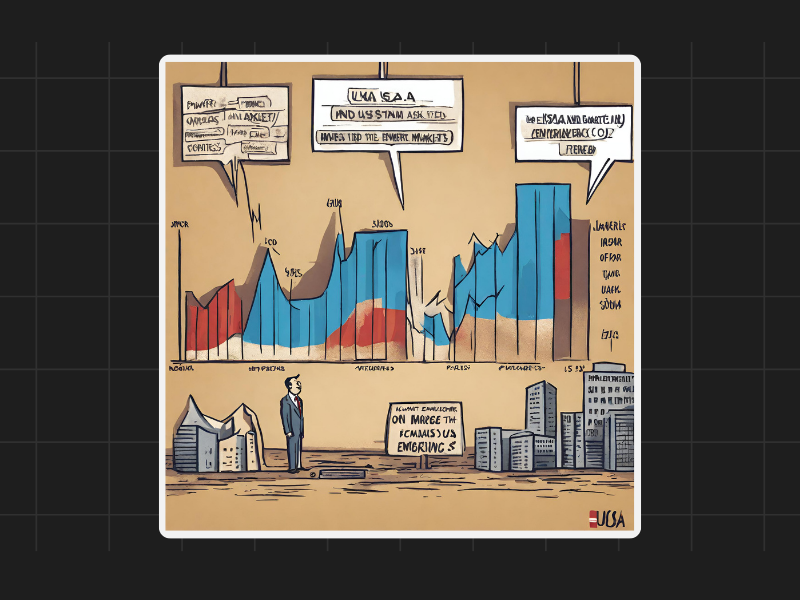The performance of the US stock market has always been closely watched by investors worldwide. As the largest economy in the world, the United States plays a significant role in driving global economic growth. In this article, we will examine the relationship between the US market and the rest of the world, and why it is crucial for other economies to keep an eye on its performance.
To analyse this relationship, let’s take a look at a chart comparing the MSCI World Index, which includes all major markets worldwide, with and without the USA. The chart covers a period of 22 years, starting from 2000 until about 2022.

From 2000 to 2004, the US market did not show any significant outperformance or underperformance compared to the rest of the world. However, from 2004 to 2008, the US market experienced a period of substantial growth, outperforming other global markets. This growth came to a halt with the 2008 market collapse, which affected markets worldwide.
After the 2008 collapse, the US market remained in line with the global markets until around 2013-2014. However, from that point onwards, the MSCI World Index without the USA plateaued, showing no substantial growth. In contrast, during the same period, the US MSCI Index increased by 112%, highlighting the significant gain made by the US market.
This striking statistic emphasises the dependence of global markets on the performance of the US market. Without a strong performance by the US market, the global economy struggles to flourish. While it is essential to recognize that there is not always a direct one-to-one relationship between the US market and other markets, the US market’s dominance in driving demand for goods and services worldwide has a substantial impact on other economies.
Some may argue that individual markets, such as the Indian market, can demonstrate their own unique trends and perform well despite the state of the US market. While this is partly true, it is crucial to note that when the mother market, i.e., the US market, is in bad shape, other markets tend to suffer as well.
Major global economic crises, such as the 2008 financial crisis, the dot-com bubble, and the recent COVID-19 pandemic, have underscored the interdependence of economies worldwide. When the US market experiences a downturn, it affects other markets globally. The United States’ substantial demand for goods and services creates a ripple effect, impacting the rest of the world when there is a lack of growth in the US market.
Currently, the US market is showing signs of a looming recession, with interest rates projected to rise above 5%. This scenario has already had consequences for various sectors, such as housing, mortgages, corporate loans, credit cards, and personal consumer loans. The leverage that thrived under low-interest rates is now being curbed, which poses challenges for future growth.
If the US market continues to stagnate, the global economy will undoubtedly face significant hurdles in achieving sustainable growth. It will require finding new areas and engines of growth to replace the current reliance on the US market. Although India has emerged as one such engine of growth, it still represents a relatively small part of the global GDP.
Despite the Indian market performing well in recent years, the MSCI World Index without the USA has not fared well, primarily because India’s contribution to the overall market remains relatively small. While day-to-day strategies may not be significantly affected by this relationship, it is essential to consider the long-term implications.
Looking ahead, it is crucial to question whether India can continue to shine if the rest of the world struggles. Can India’s growth be enough to make a meaningful difference to the overall World Index? These are important considerations for investors and policymakers alike.

If you have any questions, please write to support@weekendinvesting.com









